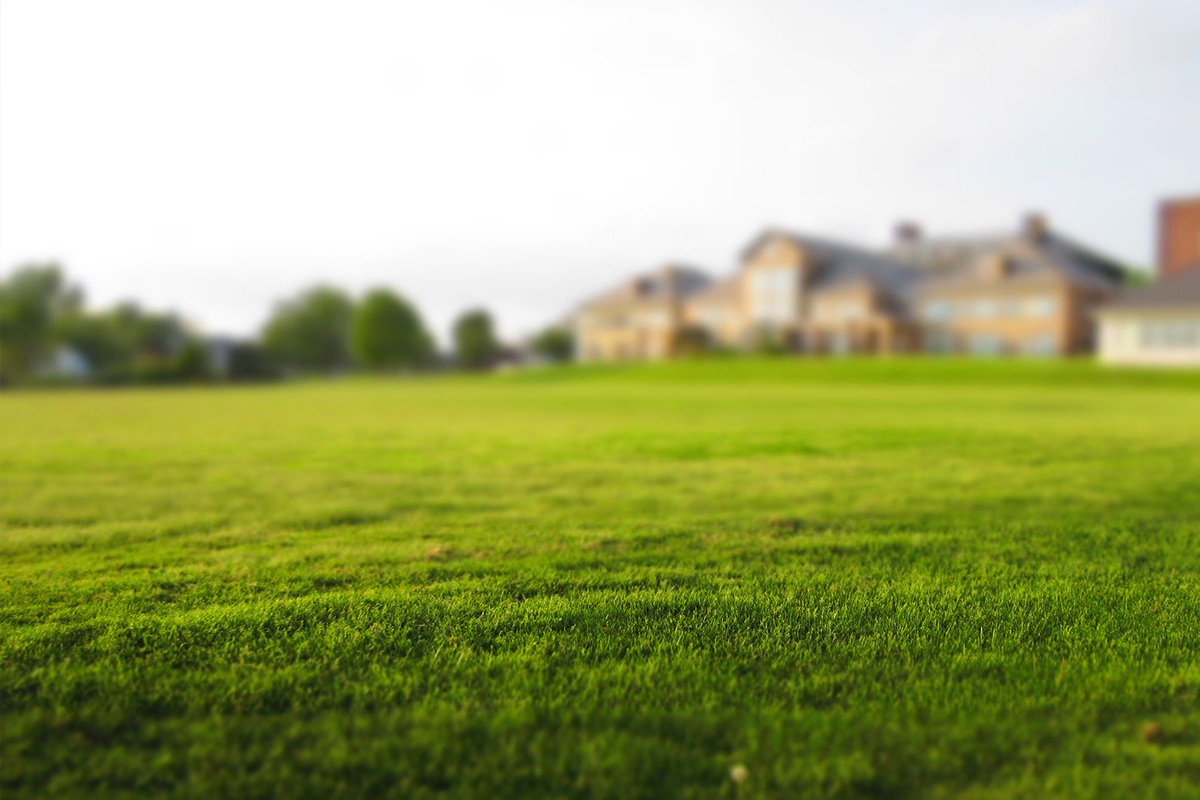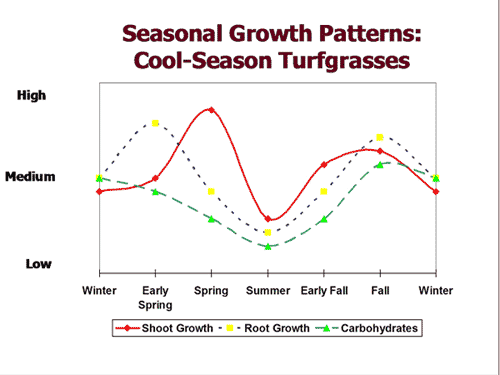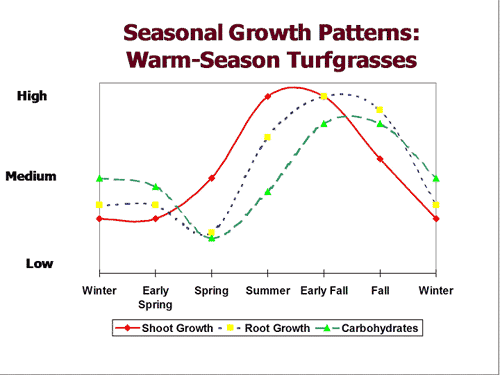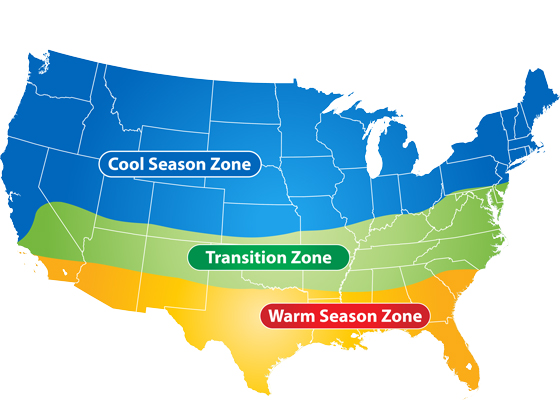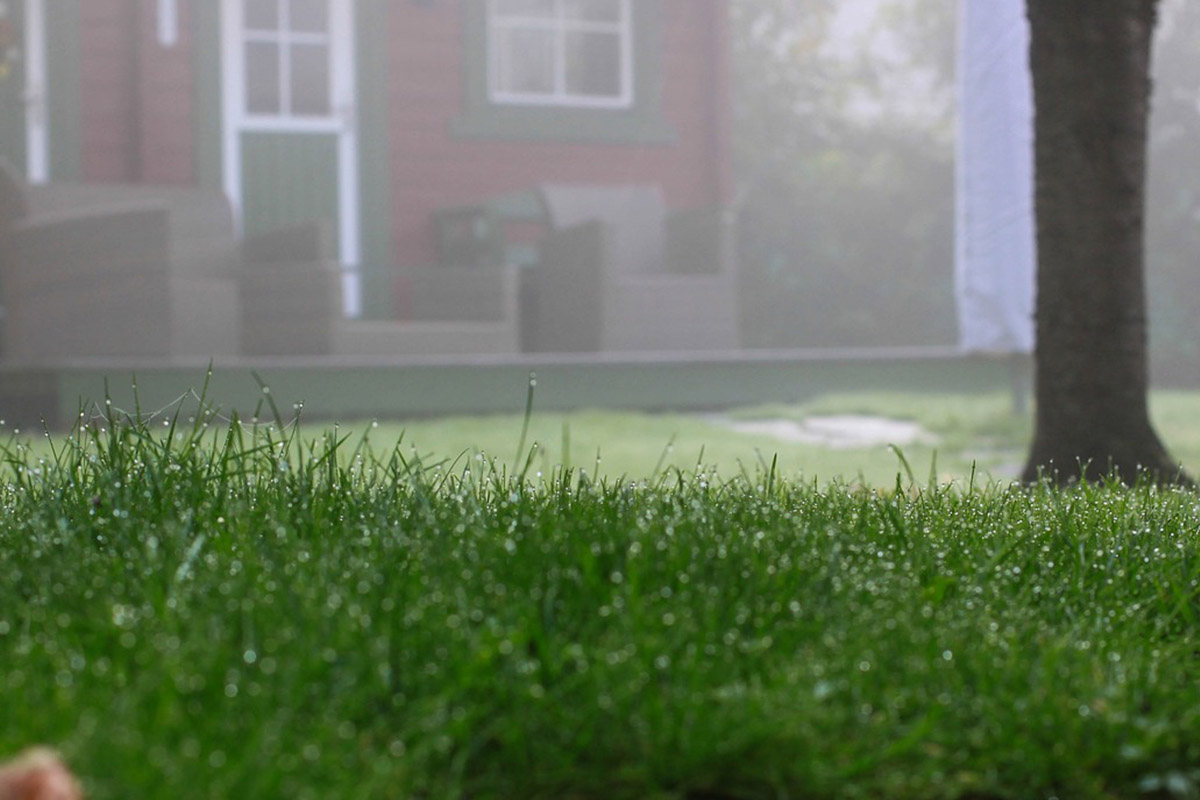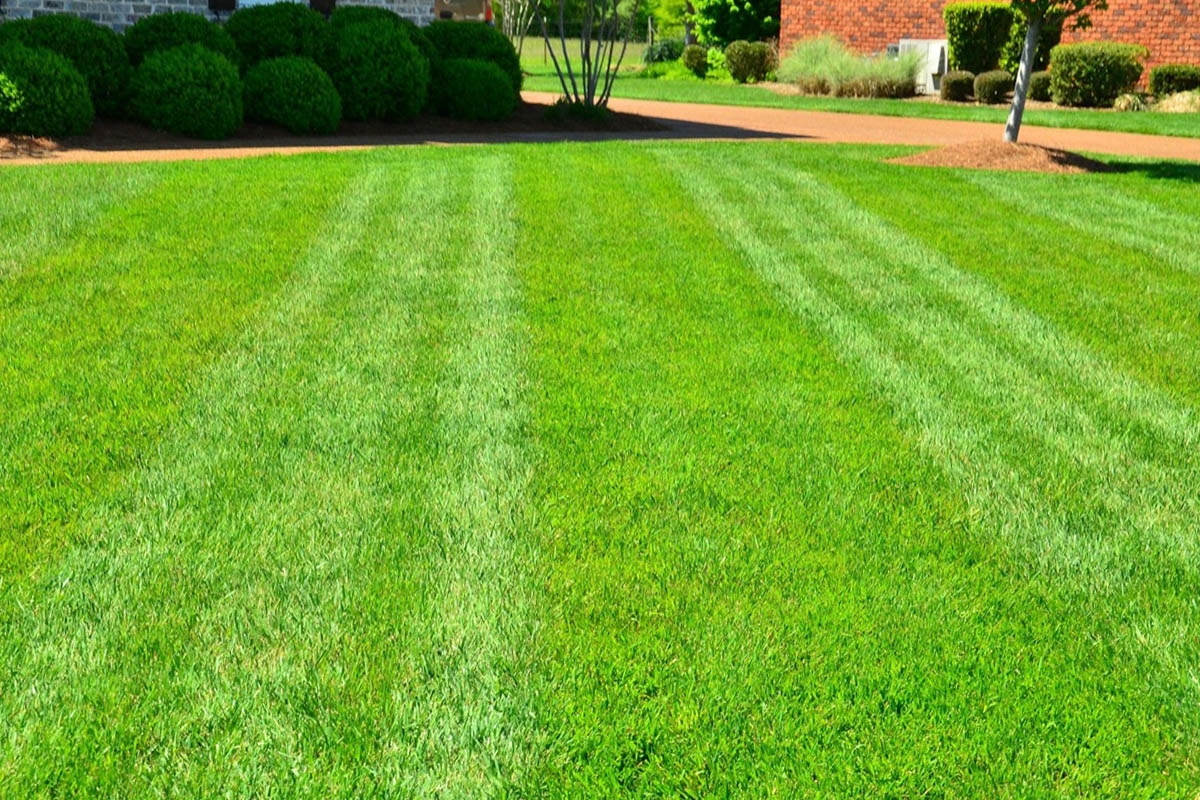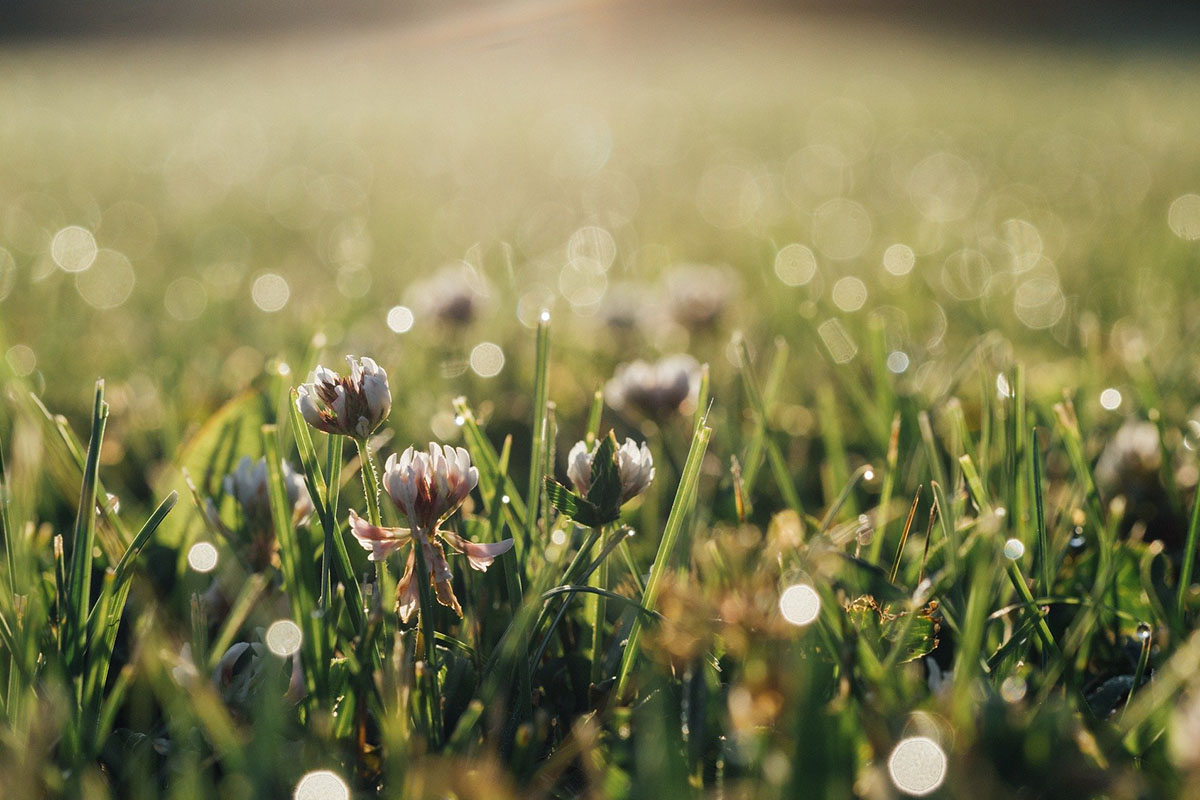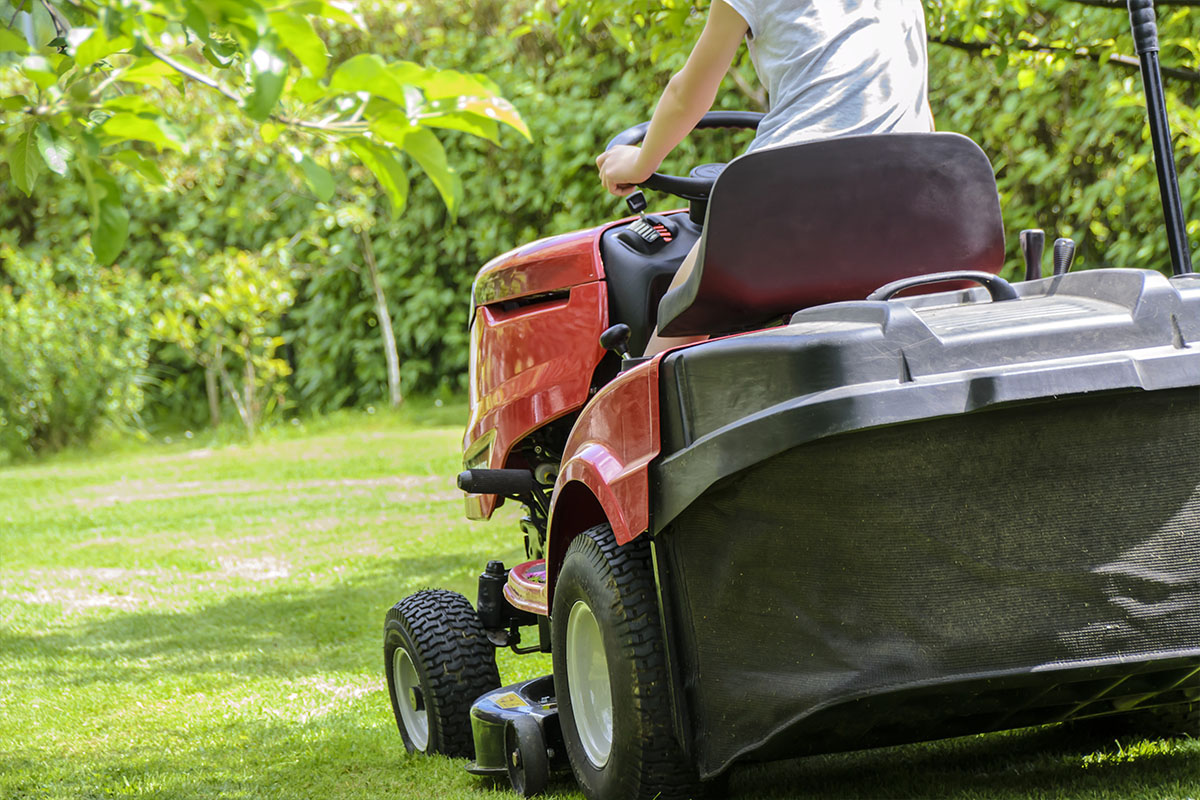We started off spring in a hurry here in the New River Valley of Virginia. That, along with the stay-at-home requirements in this time of COVID-19, has many people doing yard and landscaping work whenever the weather has allowed for it. Spending all this time in own backyards may have many homeowners noticing the bare and dead spots in their lawns, some of which may be the result of the drought conditions we experienced last fall.
This may have you thinking now is a good time to seed those spots. However, if you’ve followed along with us for very long on our blog and social media, you know that we generally recommend fall, not spring, as the best time to seed your lawn. We say this because most lawns in our area consist of cool season grass, which are better established in the fall. See this post for more on why that is.
Because the current conditions may have many people searching for what kind of grass is best for their lawn, we decided to put together this post about the differences between cool season and warm season grass. We thought we would give a little more detail about the pros and cons of each, and why most people in our area ultimately opt for cool season grass.
In an upcoming blog post, we’ll talk a little bit more about the different types of cool season grasses that we usually see here in our area, and the pros and cons of those. So stay tuned for that!
The Main Difference Between Cool Season Grasses and Warm Season Grasses
As implied in their names, the main difference between cool season grasses and warm season grasses is the temperature ranges that best suit their growth patterns, allowing for their best chance to survive and thrive.
Cool season grasses (tall fescue, Kentucky bluegrass, perennial ryegrass, etc.) do their best growing at temperatures between 60 and 75°F. Warm season grasses (bermudagrass, zoysiagrass, etc.) prefer temperatures of 80 to 95°F to achieve their best growth. These graphs from Virginia Cooperative Extension show the active growing periods of both types:
Based on these ideal temperature ranges for growth, a map of the US exists that shows zones for the type of turf grasses that should be planted.
Map from The Home Depot.
You’ll notice that Virginia is in what is called the “transition zone.” With our cold winters and hot, dry summers we get plenty of extended periods in both ideal temperature ranges for cool and warm season grasses. This means that technically, either type of grass can be planted. And unfortunately, what it really means is that neither type of grass is perfectly suited for all the conditions of our region. This can make for a difficult decision when it comes to figuring out what kind of grass is best for your lawn.
In addition to their growth patterns based on temperature ranges, we’ve summed up some other differences between cool season and warm season grasses that will hopefully help you as you consider the best kind of grass for your lawn.
How Green My Lawn Will Be With Cool Season vs. Warm Season Grasses
This may be the biggest factor for many homeowners. We’ve talked before about dormancy and how it affects the color of your lawn. Dormancy is the coping mechanism that allows grasses to weather the extreme temperatures until they get back to their ideal growing conditions. Cool season grasses go dormant, turning brown during the hottest and driest part of the summer. In the winter, cool season grasses turn a yellowish green, but are still generally closer to green than brown. So with cool season grasses, in ideal conditions, you end up with a green lawn for all but one to two months in the summer. And if you choose to water your lawn, it can stay green even during those hottest months.
Warm season grasses, on the other hand, have their dormancy in the winter. Unlike the yellowish green of cool season grasses, these grasses are totally brown during this time. So even during ideal conditions, because of the cold winters we experience in the NRV, you can expect that your warm season lawn will be brown for 4 to 5 months of the year. This is not really a desirable trait for most homeowners.
When & How to Establish Cool Season & Warm Season Grasses
Another key difference between these types of grasses is when and how they can be established in our area of Virginia.
Cool season grasses are generally easier to establish in the NRV. According to VCE, you can use sod at any time of the year that the soil is not frozen, and you can seed preferably in early fall, or early spring as the second choice.
Seeding is not recommended at all for our part of Virginia to establish warm season grasses. (Use sod, sprigs, or plugs instead). Warm season grasses should be established between June 1 and July 15 in our region of the state.
Pros & Cons: Cool Season & Warm Season grasses in the New River Valley of Virginia
To summarize some other differences between these grasses, we’ve compiled a list of pros and cons for each type (specific to our area).
| Warm Season Grasses | Cool Season Grasses | ||
|---|---|---|---|
| Pros | Cons | Pros | Cons |
|
Can be mowed lower than cool season grasses |
Lawn will be dormant (brown) for 4-5 months of the year |
Lawn will be greener for more of the year |
Require higher mowing heights for turf health |
|
Greater water use efficiency rates—require 30% less water |
Difficult and expensive to establish – cannot be established with seed in our area of VA |
Generally easier and more cost effective to establish than warm season grasses |
Require 30% more water than warm season grasses |
|
Less sensitivity to environmental extremes of summer |
Potential for winterkill during extreme winters |
Can handle extreme winter temperatures without being killed |
More sensitivity to environmental extremes of summer |
|
Limited variety options for our area of VA — only bermudagrass and zoysiagrass are adapted to grow here |
More variety options |
More pest problems |
|
When considering these pros and cons (and others that may not be included here), most people in our area ultimately end up selecting cool season grasses for their lawns. While we do see a few warm season lawns here and there, VCE states that “the mountain region [in Virginia] is likely best suited for cool-season turf.”
Be sure to check back in upcoming months here on the blog because we’ll be covering the different types of cool season grasses that we usually see here in the New River Valley, and the pros and cons of those. In the mean time, if you have any questions about the right type of grass for your lawn and how to achieve your goals, get in touch with Green Care today!

